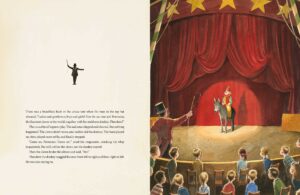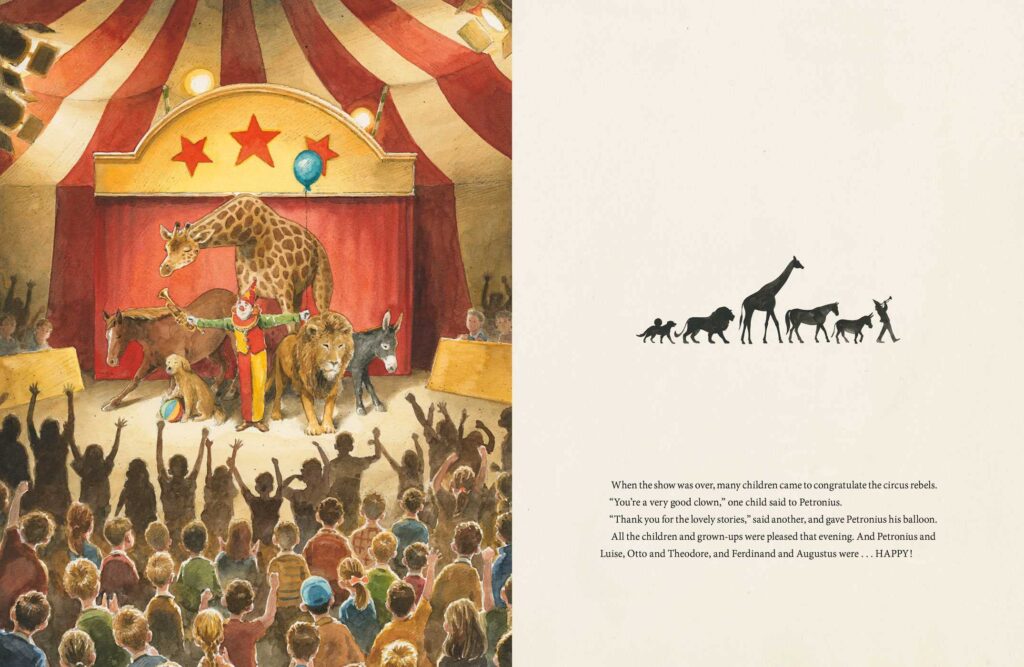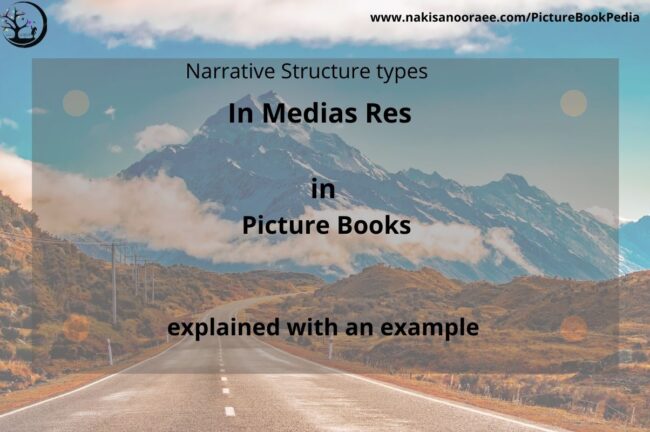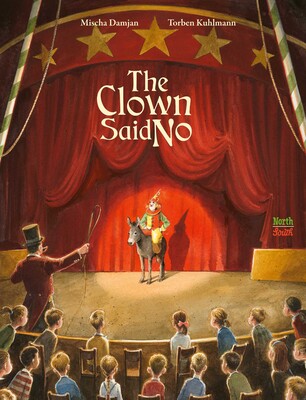The three-act structure (or Beginning/middle/End), with no doubt, is the most common narrative structure for stories and screenplays. However, it is not the only one.
In this blog post, we will look at another narrative structure: in Medias Res. This may work better to tell your story, may not. Knowing it, however, helps you to improve your writing toolkit and select the best narrative structure you can.
In Medias Res
In Medias Res is a Latin phrase that means “in the middle of things.” This means the story starts from the middle of the Plot. For example, the first scene of the movie is the police are chasing a car. You don’t know the reason. Neither you know any of the characters.
The narrative structure of many adult books and even middle grade books are in medias res. I was always looking for a picture book written so and hadn’t found any. Until, I found an example and am going to write this blog post about this structure, referring to this book.
The Clown Said No by Mischa Damjan (1914-1998) was first published in 1962. For its 60-anniversary on October 4, 2022, Simon & Schuster will republish this book (If you read German, the new version is already available in the German language).
This story is about the world’s funniest clown—Petronius—who felt fed up from working with the ringmaster. Petronius and four animal friends leave the circus and start their own one.
Difference between three-act structure and in medias res
If you wanted to plot this story in the three-act structure, it would be like this:
-
Beginning: clown and his friends were working in a circus (describing the setting and the characters). The ringmaster mistreats them all. They got fed up. One day, they decided to leave (Inciting Event).
- Middle: Left the circus, clown and animals tried to find jobs to earn money, to buy a circus tent for themselves. They earned the money, bought a tent, started their circus. They announced their performance.
- End: People came to see their performance. People loved them (climax). The clown and the animals were happy (resolution).
How would this story start when it is written in the in medias res structure? The story should start right in the middle, which is a very tricky decision; You have got to pick up the most emotionally tight scene. This story starts with the scene in which, for the first time, the clown disobeyed the ringmaster. (This is the second spread of the book. The first spread is only an illustration of the outside of the circus tent).

It is a bright choice when I pondered about it. Any child, at any stage, wanted to say NO to someone—to the mother, foremost. The reader (child or adult) immediately resonates with the clown and identifies himself with the clown. When I first read the book, I turned page after page to see if the clown succeeds or not. I wanted him to succeed, for the sake of all the situations I wished I could say No and didn’t dare to do so.
If you decide to select this narrative structure, make sure that you select an important emotional scene to start from. Having said that, in medias res doesn’t work well for all stories. In this story, the setting doesn’t need to be explained! ‘A clown disobeyed a ringmaster’ is a clear setting.
Now, the reader is hooked. Why did the clown say no? Turn the page and read more to find out! This is a good way to hook the readers into the story.
Another concern about in medias res is how to handle the backstory. The reader needs to know why the clown was unhappy. Why were other animals unhappy? The concern is that the story, at this stage, could become very wordy, and therefore lose the reader’s interest. In this story, animals speak briefly about their dissatisfaction while they were explaining their dreams for their now-free life.
No matter which narrative structure you chose, you have got to clarify the story stake upfront for yourself and between the lines for your reader (I will discuss the Story Stake in another blog post). However, in medias res raising the story stake is even more important. The stakes should be raised soon after the opening scene, otherwise, the reader leaves. In this story, while handling the backstory, Gustav the lion speaks of his dream: go city to city until they arrive in Africa, where he feels himself at home. With this dream, the author raised the philosophical stake; longing for freedom.
After sharing the backstory with the reader, a in medias res story continues similar to a three-act structure: a set of problems and trials and who the character deals with them. In this story, we read how animals earn money to buy a new tent.

And finally, resolution: the clown and his animal friends establish their own circus. Thus, the second and the last part of the story are not very different from the three-act structure.
In medias res is a way to hook the readers sooner and deeper into the story, compared to the three-act structure in which the story starts from the Beginning. Still, using merely in medias res doesn’t guarantee success. If you start from the best emotional scene and handle the backstory well, it will be a brilliant story like The Clown Said No.
I write blog posts about the craft of writing picture books regularly. The list of the previous posts is on PictureBookPedia. Also, I publish a quarterly newsletter that includes links to my recent blog posts. To subscribe please just enter your email here:


